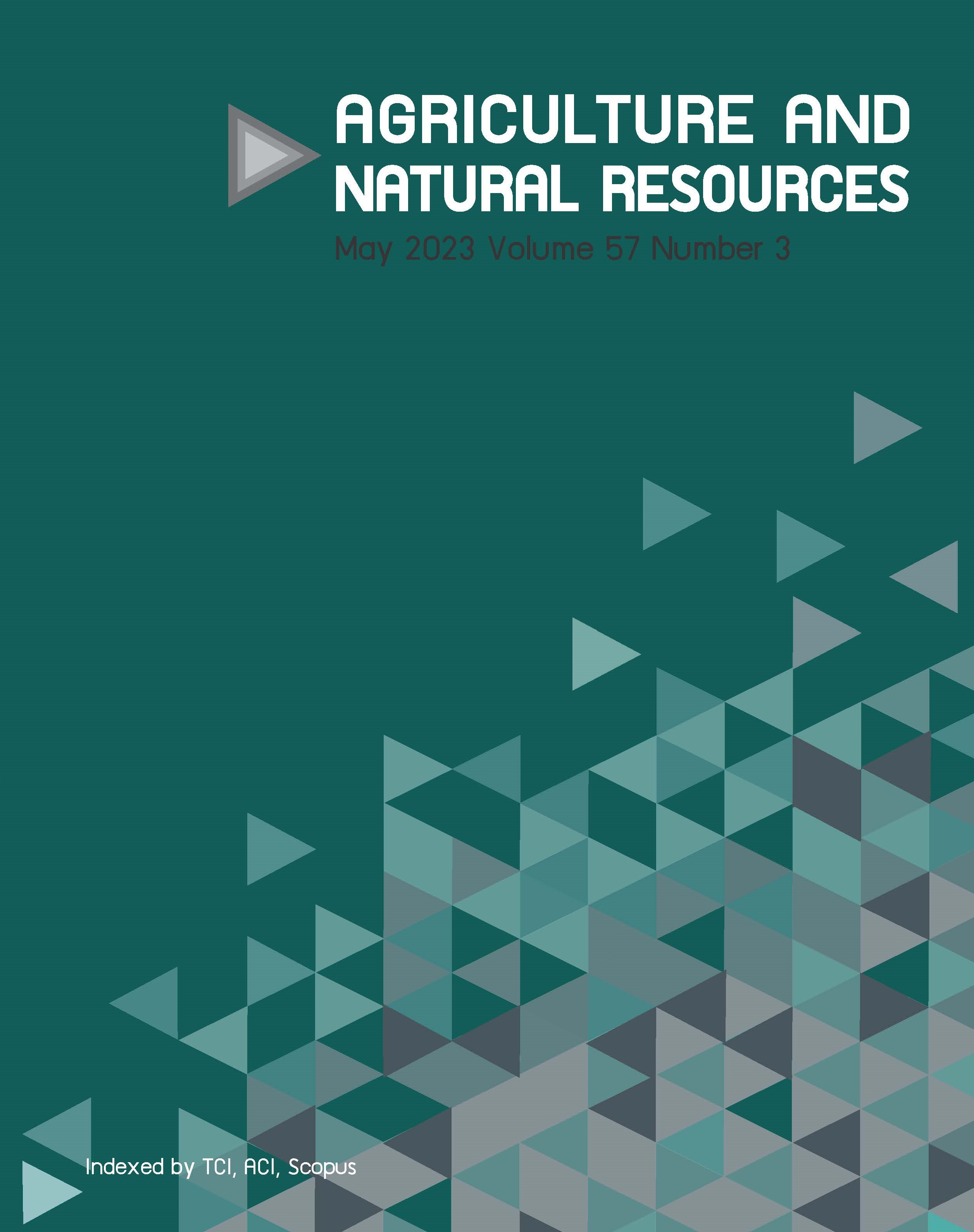QTL analysis of seed weight and seed dormancy in black gram (Vigna mungo [L.] Hepper)
Keywords:
Black gram, Quantitative trait locus (QTL), Seed dormancy, Seed size, Seed weightAbstract
Importance of the work: Black gram is a scientifically important orphan crop with little research published on the molecular breeding of this legume. Seed weight is a key trait contributing to seed yield. Seed dormancy can be exploited to reduce pre-harvest sprouting.
Objectives: To identify the quantitative trait loci (QTLs) controlling black gram seed weight and seed dormancy.
Materials & Methods: Two F2 populations developed from a cross between cultivated (Chai Nat 80 [CN80]) and wild black gram (PI213017 or TVnu1076) were grown under field conditions. The F2 populations were determined for seed weight and seed dormancy.
Single nucleotide polymorphism-based linkage maps previously constructed for the two population were used for QTL analysis. Candidate genes were identified using the reference genome sequence of CN80.
Results: The broad-sense heritability (h2 ) calculated for seed weight was 65.23–73.71%, while that for seed dormancy was 81.53–99.80%. In total, 10 QTLs on 7 linkage groups (LGs) were detected for seed weight and three QTLs on two LGs were detected for seed dormancy. Depending on the population, QTLs explained between 5.07% (qSd100wt7.1+) and 34.20% (qSd100wt10.2+) of the seed weight variation, and between 10.18% (qSdwa6.1-) and 43.81% (qSd100wt6.2-) of the seed dormancy variation. Candidate genes of various functions were identified for these two traits.
Main finding: Novel QTLs and candidate genes controlling seed weight and seed dormancy were identified for black gram. One of the candidate genes, WVD2-LIKE 4 for seed weight, appeared to be an ortholog with a candidate gene for the same trait in mungbean.
Downloads
Published
How to Cite
Issue
Section
License
Copyright (c) 2023 Kasetsart Universityonline 2452-316X print 2468-1458/Copyright © 2022. This is an open access article under the CC BY-NC-ND license (http://creativecommons.org/licenses/by-nc-nd/4.0/),
production and hosting by Kasetsart University of Research and Development Institute on behalf of Kasetsart University.







